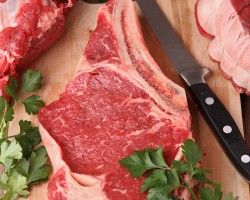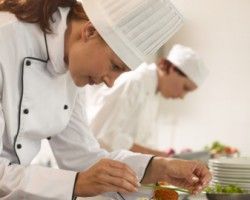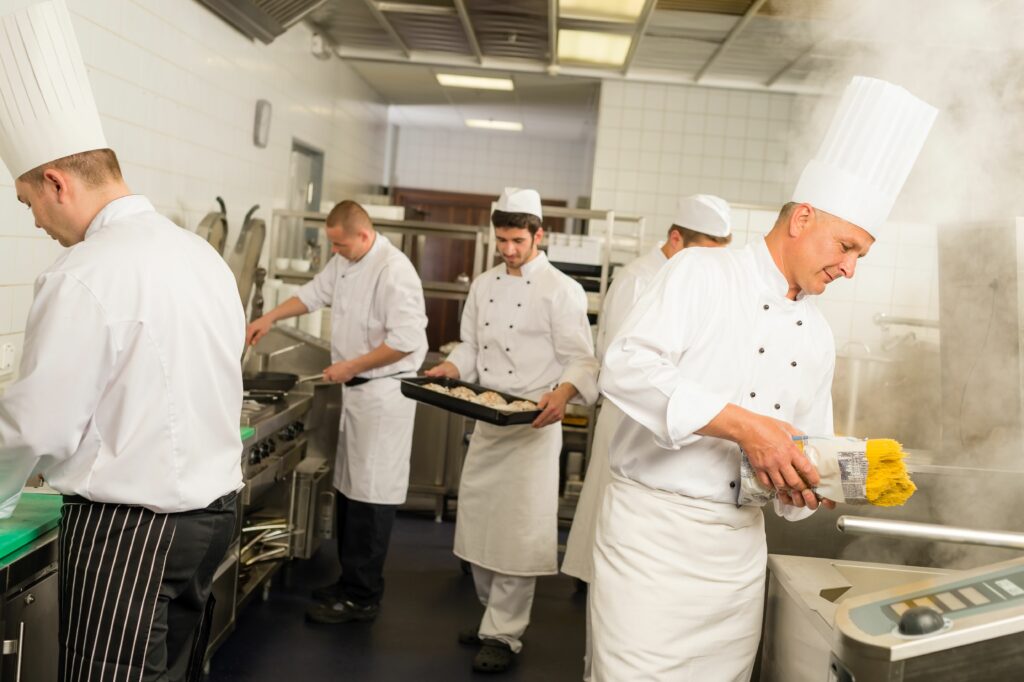How to Carry Yourself and the Benefits of Strong Abs & Legs
No matter if they’re heavy-set or trim and sinewy, all experienced chefs know cooking is a physical sport! Strong abdominal muscles take the load off of your back and prevent injuries. So do strong legs and knowing how to lift properly with those legs. Lifting 30 lb. pots full of marinara sauce and slogging around 50 lb. sacks of flour is completely normal. One must have the fortitude and the smarts to handle the load the right way and to be sure ask for help (or use a cart) when needed.
Fabrication

Nope that has nothing to do with fabric or working on an assembly line, but rather, with being able to section out various pieces of meat from larger sections what are called “sub primal cuts.” Any good chef knows basic butchery and can section off a filet, rib eye, and New York cut with ease. As of late, certain restaurants have adopted a policy to use as much of an animal’s products as possible, wasting little if anything. Hence, the ability to portion out various cuts from a whole hog is a skillset that’s definitely in demand.
The Richness of Real Kitchen Lingo
From the essential, everyone-must-know “behind” to “all day” and “86” there’s a whole ton of terms that save time and enable every person on the line to know what’s going on. Conventional culinary arts schools absolutely love throwing lots of French at you, and to be sure there are a whole lot of French terms in cooking, especially when it comes to technique, but knowing what “fishspat,” “chinacap,” and “lowboy” mean is equally important if you want to know what the heck is going on!
It’s Hot, Hot, Hot!
Most kitchens are hot. I mean really hot. And those lovely chef’s whites aren’t always the coolest thing you could be wearing. Yes, sweat trickling down your legs and soaked socks is a possibility in many kitchens. Overtime, most people get used to the heat but the heat-sensitive should take note. Oh, and if you’ve got long hair, know you’ll be expected to braid it and slick it back or up so that not a hair is out of place. Ladies–makeup should be minimal or non-existent since it’ll melt off anyway and most head chefs don’t want to see a pair of raccoon eyes (caused from drippy mascara and/or eyeliner) looking back at them, though there are exceptions.
Teamwork is What it’s About

Traditional culinary schools tend to be highly competitive and place a lot of emphasis on individuality and creativity, both of which are hallmarks of a great chef. But a more important skill to master is being able to work as part of a team. Cooking on the line is a team effort, not a solitary one. Everything you do, from the way you prep and plate an amuse bouche, to the way you walk can affect the flow of another chef (case in point, a lefty who plated everything the other way around). Moving your body to work in consort with the other members of the team and anticipating the movements of other chefs will make you a valued addition to the team much sooner than will showing off all your fancy knife skills. Remember, no matter what they say in the culinary magazines, in the real world of cooking, greatness is achieved by the team, not the individual. That said, being part of the team has it’s rewards. There’s the camaraderie, the group mission and the zen-like, meditative quality of cooking on the line that’s totally transportive and addictive.
Learn about our real-world, hands-on approach to training people for careers in the culinary arts from inside the food industry.





